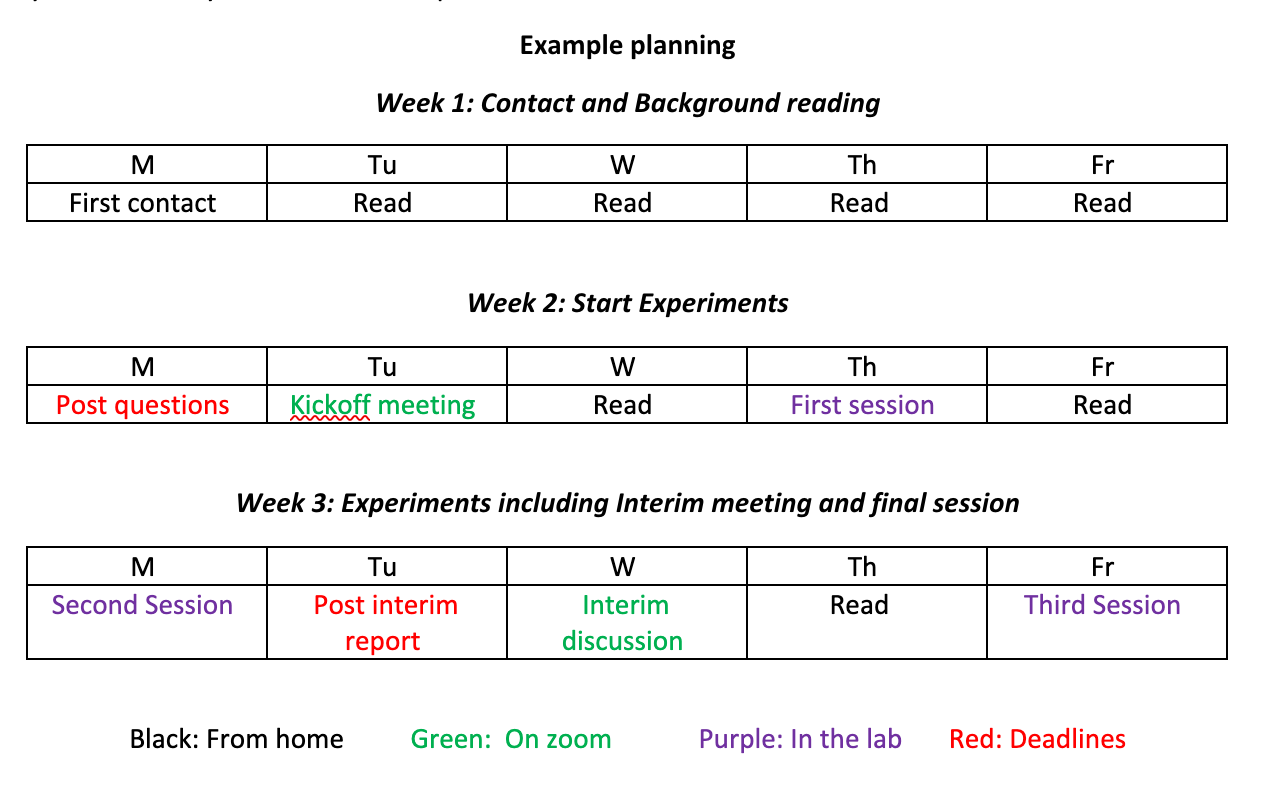General overview of the SQUID RP¶
For this RP, we typically plan 3 half days (“sessions”) for you to work in the lab. During the sessions, we will provide you with liquid nitrogen at the start of the session keep an eye on the teams channel to check if you have any questions. If you suspect that hardware or software is not working, please post immediately!
When contacting us the first time by email, the first task will be to schedule the "kickoff meeting". The kickoff meeting is a 30-minute meeting on Zoom that is scheduled after you have read the background reading material to answer any questions about the background reading material and go over the planning for the first day. We will ask you to prepare and post a minimum of 3 questions before the meeting in your channel.
During the first day, we will arrange a 15 minute meeting, in person or video call in via Teams, after one hour to see how things are going and make sure that you have not gotten stuck. Please watch the videos ahead of time so you can get things going as quickly as possible so we can make the most of this initial checkup meeting.
The during the first two, you will collect as much data as you can, and prepare an intermediate report of the data you took and the analysis you have done so far. The report should not be a “written” report but be in the format of slides showing the plots of representative data you have taken along with comments and questions you might have about the data. This report will be shared with the supervisors by posting a PDF in the channel.
Before the 3rd session, we will schedule a 30-minute “interim report” video meeting with the Gary and the supervising PhD student to discuss the intermediate results and make a plan for the third sessions.
Week 1: Reading and planning
- Monday: you should have contacted us by email
- Start reading background material
- Watch (at least) the following videos: Safety, Hardware Intro, Software Intro
Week 2: Experiments Week 1
- Post questions about reading material or videos in channel
- Kickoff meeting
- First session at least should take place in this week
Week 3: Experiments Week 2
- Second session
- Post interim analysis
- Interim discussion meeting
- Third session (if needed or desired)
Here is an example of such a planning (due to irrgularity of practicum scheduling, we will have to reschedule this invidually for each group):
